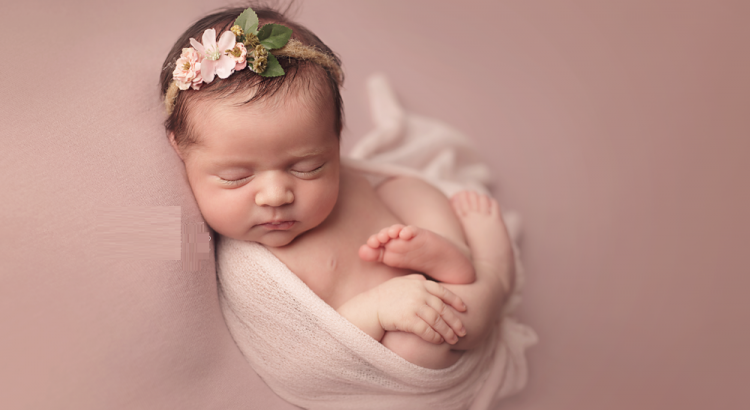Cute, cuddly, cherubic little babies.
Who wouldn’t want to take pictures of them? In fact, there are a lot of parents who spring for professional photography sessions to make sure their precious little one has a perfect memento of his or her first few months.
Tiny Babies, Big Responsibility
While there are plenty of parents who are happy to hire professional photographers to take photos of their newborn child, there are some photographers who are cautious about taking on these shoots. This is because not everyone is equipped with the patience and skills to photograph a tiny bundle of joy, which is different from working with an older child or an adult.
However, there are those who are gifted with the right skills for a newborn photographer. Photography studios that have this kind of photographer in their stable are lucky indeed as babies and little children can be quite tricky to shoot. These photographers have the talent and personality to deal with the unpredictable nature of infants.
Parents and families would do well to ensure that they get the services of a qualified baby photographer. This will ensure that the newborn pictorial session is smooth-sailing.
If you think you have what it takes to be a newborn photographer, then here are some simple tips to get you started:
1. Safety First. Always.
There are so many things to consider when you think about a baby’s safety during the shoot. The first thing that you need to bring is your common sense.
Do not set up a location or bring props that would endanger the child. This includes sharp, hard, or heavy objects. Opt for soft and gentle items such as fluffy pillows, blankets, or bean bags.
Should the parents push for a concept that might be risky, discuss it ahead of time. Professional photographers usually do a separate shoot for concepts that may pose harm for the infant. For example, if they want a rustic approach and want to shoot their baby on top of a tree, it will require photography and Photoshop skills to do so. Shoot the baby in a safe and secure surface first, then shoot the tree. Then you can do post-production composites that will still achieve their goal.
There should also always be a spotter or someone who is within arm’s length of the baby at all times. This will ensure that if anything happens, someone is there to quickly save the day.
2. Prepare Well for the Shoot.
As with any pictorial, it is ideal to meet with the client first. In this case, you need to iron out the details with the parents. Decide on the best time and date for the shoot. Some parents may opt to go on location, whether it is at home, in one of the fancy hotel rooms in Dubai, or outdoors.
This will help you determine if you need to bring a heater or an extra fan (depending on the weather), for example. There may be certain limitations, as well, when it comes to locations such as needed permits or venues with weather considerations.
3. Get Over the Gear
As a beginner, you are not expected to have all the professional gear to shoot. Don’t get gung-ho over having the equipment.
You can already take great pictures even with a decent point-and-shoot camera. Just remember to make use of creativity, proper lighting techniques, and camera angles. Babies are usually asleep during the photo shoot, so you won’t need to worry about movement and shutter speeds.
Make sure that you also master the basic baby poses. Conquer getting these shots before advancing to more radical poses. These shots include the back pose where the baby is lying on his back, the tummy pose, the side pose, and the detail shots. Detail shots include a picture of their tiny toes, or their hands, or even their sleepy eyelids.
4. Use Natural Light
If you’re shooting indoors, you can make use of natural light from big windows. It’s easy to manipulate and can capture your subject with naturally lit shadows. You can also opt to use a reflector to fill in the shadows.
When shooting outdoors, you can use light angles and location to make the best use of available sunshine. When the sun is low, usually in the morning and evenings, you can use it to cast a soft, warm glow on your sleeping subject. You can also use side lighting and find the most flattering angle to produce a winning shot.
5. Learn Post-production Techniques
Since some concepts involve tricky positions for the baby, knowledge in Photoshop or Lightroom can be especially useful. This will allow you to do post-production enhancements or composites. Additionally, it is mainly for the baby’s safety as you won’t need to position the infant in precarious poses.
Worth a Thousand Words
With the tips mentioned above, you can confidently take newborn photos and produce awesome shots.
It is important to remember that when dealing with infant photography, you should bring lots of patience and adaptability. Babies can become cranky, might wet the props, or will need to be fed and burped at regular intervals. Be ready for these situations. Anticipate these possibilities so you are also in the proper mindset.
Austin Newborn Photography is adept at capturing their clients’ emotions and expressions, which results in some extremely compelling images.
It is crucial that you and the subject are both in good spirits since every photo you snap will be treasured for life.
AUTHOR BIO:- Stefanie Descheemaecker is the Studio Manager at Stu Williamson Photography at The Palm Jumeirah – Fairmont Hotel in Dubai. She has been with the company for almost 3 years and is the driving force behind the success of the business. A keen amateur photographer, Stef combines her natural creative eye with a strong business acumen to help Stu Williamson Photography become the most trusted and successful photography business in the UAE.
With over a decade of experience, Laura Brett Newborn Photography has had the privilege of capturing the precious moments of newborns for Atlanta families.





